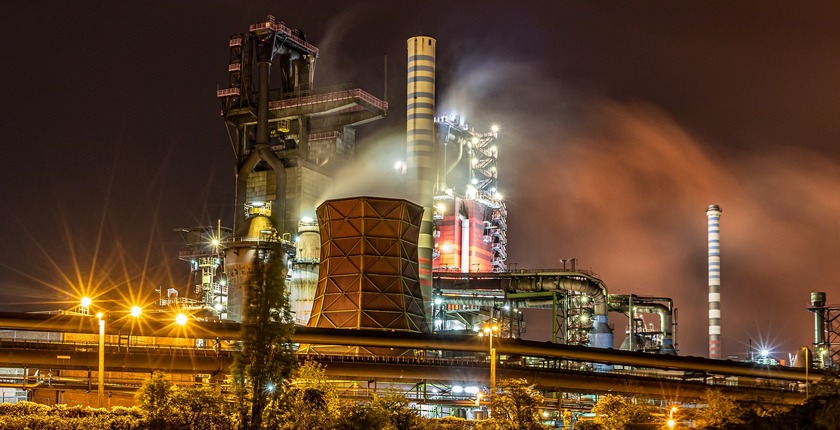
Germany Launches Subsidy Scheme to Promote Sustainable Industrial Production

Germany has introduced an unprecedented subsidy scheme aimed at encouraging energy-intensive industries to transition to cleaner and more climate-friendly production processes. The government has allocated EUR 23 billion for the first two rounds of bidding.
Auction Scheme for Climate Protection Contracts
The auction scheme, known as climate protection contracts or carbon contracts for difference (CCfDs), is designed to support companies in remaining competitive as they shift from fossil fuel-based production to cleaner, albeit more expensive, methods. The pilot round, which was launched this week, allows companies emitting over 10,000 tons of CO2 per year to compete for a total of EUR 4 billion in subsidies. The second round, with a budget of EUR 19 billion, will take place in the fall.
The European Union has approved the scheme, and the German government is prepared to disburse a “medium double-digit billion figure” over the coming years.
The ministry hopes the scheme could help avoid 350 million tons of CO2 emissions
Germany’s Federal Ministry for Economic Affairs and Climate Action projects that the entire mechanism, targeting industries such as paper, steel, chemicals, and cement, could help avoid 350 million tons of CO2 emissions by 2045.
Bridging the Cost Gap for Cleaner Production
Successful bidders will enter into 15-year contracts and will be required to initiate decarbonization within three years. The two-way carbon contracts for difference will bridge the cost gap between conventional and cleaner solutions. However, once clean production becomes cheaper than conventional processes, companies will be obligated to reimburse the government for the difference.
Companies participating in the scheme will propose a CO2 price that enables them to transition to cleaner production methods while remaining economically viable. If the EU’s CO2 price is lower than the proposed figure, the companies will receive funding from the government. However, if the price exceeds the bid, companies will be responsible for repaying the funds.
Beneficiaries of the scheme can utilize the funds to implement climate-friendly solutions such as renewable power sources, hydrogen, or carbon capture and storage (CCS).
Greenpeace fears subsidies could support “dangerous” solutions
Vice Chancellor and Federal Minister for Economic Affairs and Climate Action, Robert Habeck, stated that Germany is “promoting modern, climate-friendly industrial plants of tomorrow” through this new scheme.
However, environmental NGO Greenpeace has called for restricting the subsidies to companies that already avoid CO2 emissions. Greenpeace argues that steel production using green hydrogen or chemicals production using renewable energy are already established procedures, and subsidies could help modernize these industries.
On the other hand, Greenpeace expresses concerns that companies may receive support for “dangerous and superficial solutions,” such as carbon capture or blue hydrogen, which could hinder Germany’s transition away from outdated and environmentally harmful technologies.
Post Views: 105
SDGs, Targets, and Indicators
| SDGs | Targets | Indicators |
|---|---|---|
| SDG 7: Affordable and Clean Energy | Target 7.2: Increase the share of renewable energy in the global energy mix | Indicator not mentioned in the article |
| SDG 9: Industry, Innovation, and Infrastructure | Target 9.4: Upgrade infrastructure and retrofit industries to make them sustainable | Indicator not mentioned in the article |
| SDG 13: Climate Action | Target 13.2: Integrate climate change measures into national policies, strategies, and planning | Indicator not mentioned in the article |
| SDG 17: Partnerships for the Goals | Target 17.16: Enhance the Global Partnership for Sustainable Development | Indicator not mentioned in the article |
1. Which SDGs are addressed or connected to the issues highlighted in the article?
- SDG 7: Affordable and Clean Energy
- SDG 9: Industry, Innovation, and Infrastructure
- SDG 13: Climate Action
- SDG 17: Partnerships for the Goals
The article discusses Germany’s subsidy scheme to encourage energy-intensive industries to transition to cleaner production processes. This aligns with SDG 7, which aims to ensure access to affordable, reliable, sustainable, and modern energy for all. It also relates to SDG 9, which focuses on promoting inclusive and sustainable industrialization and fostering innovation. Additionally, the article addresses SDG 13, as it discusses the reduction of CO2 emissions and the transition to climate-friendly production. Lastly, SDG 17 is relevant as it emphasizes the importance of partnerships for achieving sustainable development.
2. What specific targets under those SDGs can be identified based on the article’s content?
- Target 7.2: Increase the share of renewable energy in the global energy mix
- Target 9.4: Upgrade infrastructure and retrofit industries to make them sustainable
- Target 13.2: Integrate climate change measures into national policies, strategies, and planning
- Target 17.16: Enhance the Global Partnership for Sustainable Development
Based on the article’s content, the specific targets that can be identified are increasing the share of renewable energy in the energy mix (Target 7.2), upgrading infrastructure and retrofitting industries to make them sustainable (Target 9.4), integrating climate change measures into national policies (Target 13.2), and enhancing the global partnership for sustainable development (Target 17.16).
3. Are there any indicators mentioned or implied in the article that can be used to measure progress towards the identified targets?
No indicators are mentioned or implied in the article that can be used to measure progress towards the identified targets.
Overall, while the article highlights initiatives related to sustainable development goals, it does not provide specific indicators to measure progress towards the identified targets.
Behold! This splendid article springs forth from the wellspring of knowledge, shaped by a wondrous proprietary AI technology that delved into a vast ocean of data, illuminating the path towards the Sustainable Development Goals. Remember that all rights are reserved by SDG Investors LLC, empowering us to champion progress together.
Source: balkangreenenergynews.com

Join us, as fellow seekers of change, on a transformative journey at https://sdgtalks.ai/welcome, where you can become a member and actively contribute to shaping a brighter future.






